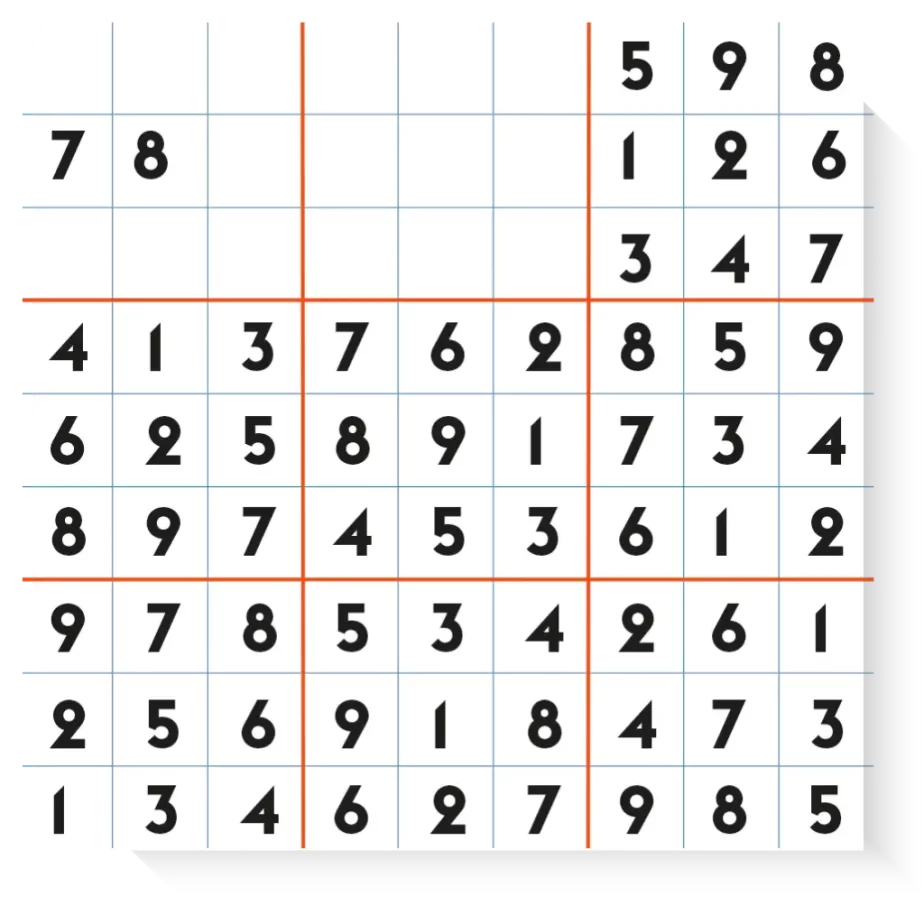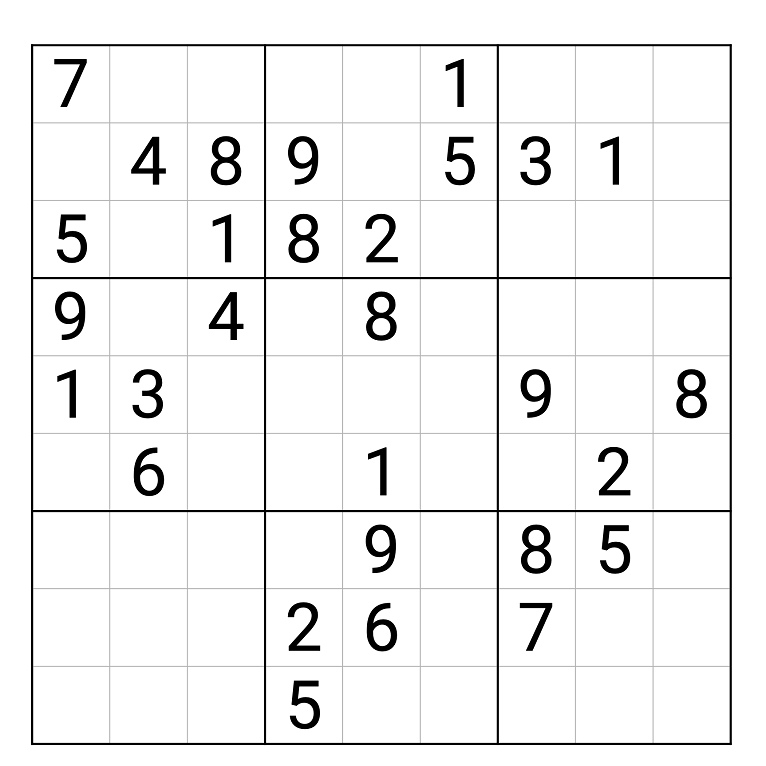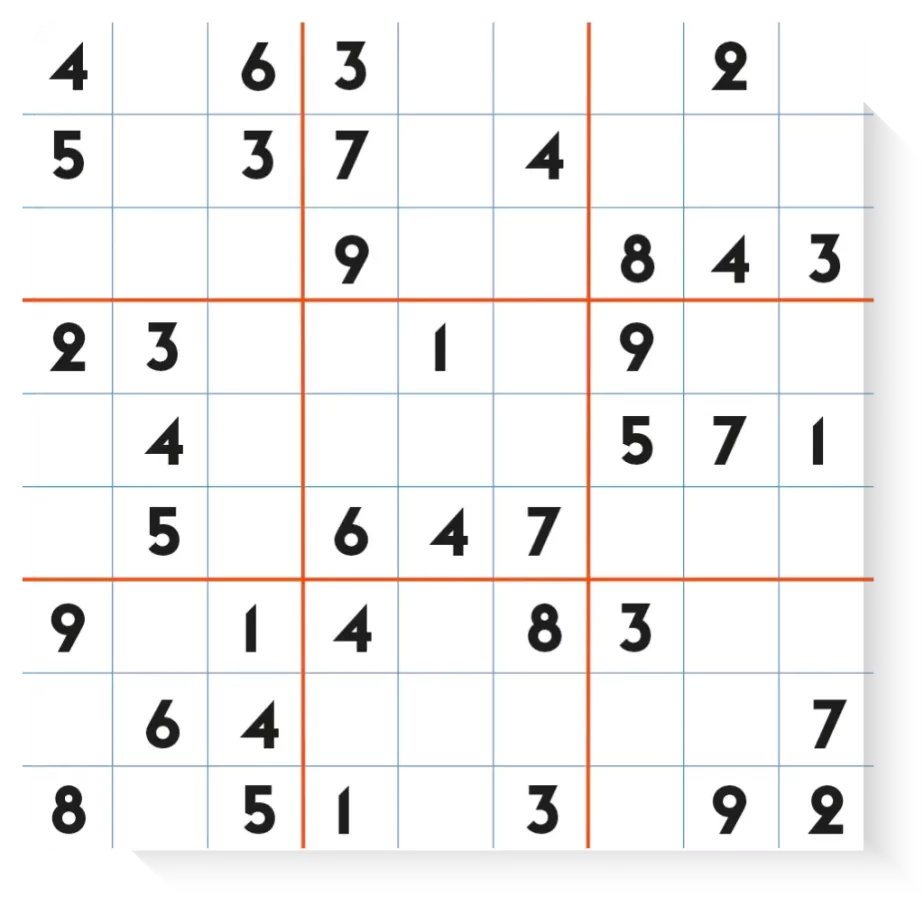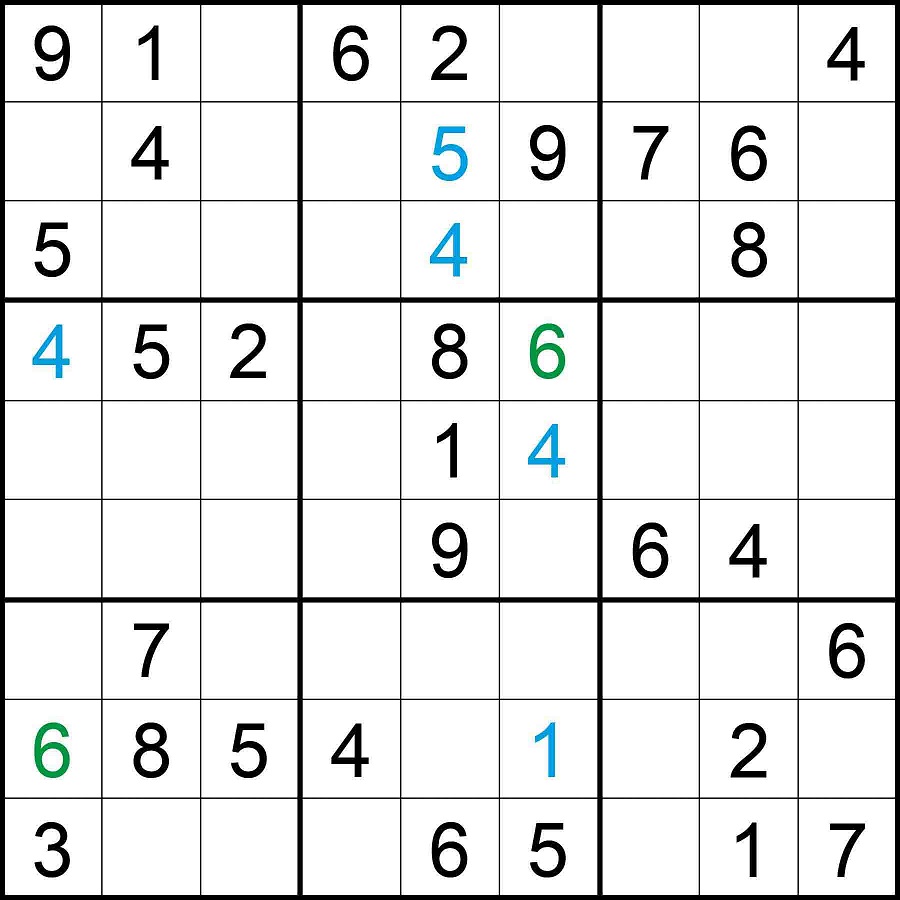Introduction to Sudoku Puzzle Basics
Sudoku is a beloved puzzle game enjoyed by people around the world. Embarking on the journey to solve a Sudoku puzzle requires understanding its basic structure and objectives.
Understanding the Sudoku Grid
A standard Sudoku grid consists of 9×9 squares, divided into nine 3×3 blocks. These blocks are separated by thicker lines, ensuring clarity for placement. Each row and column must contain numbers 1 to 9, without repetition.
Objective of Sudoku
The goal is simple yet challenging: fill all empty cells in the grid. Each row, each column, and each 3×3 block must have all numbers from 1 to 9. Solving the puzzle means no number repeats in any row, column, or block. The appeal lies in the strategic placement of numbers based on logical deductions.

Step-by-Step Beginner Strategies
The Role of Visualization in Solving Sudoku
When learning how to solve sudoku puzzles, visualization is key. Start by scanning the grid. Look for numbers that stand alone in a row, column, or block. Imagine lines that extend from these numbers across the grid. Your aim is to find empty cells untouched by these lines. These spots are perfect for placing new numbers. This method helps in reducing the number of potential spots for each number.
Identifying Candidate Lines
As you get comfortable with visualization, candidate lines come next. They appear in a block where two or three cells might hold the same number. By marking these cells with that number, you form a mental or visual ‘candidate line’. This line helps by ruling out these numbers from other parts of the grid. Remember, if a number appears in a candidate line within a block, it cannot appear in that line outside the block.
Introduction to Pencil Marks
Pencil marks are a way to keep track of possible numbers for each cell. After using visualization and spotting candidate lines, jot down small numbers in the corners of the cells. These marks represent potential numbers that could fit based on what you’ve deduced so far. Pencil marks serve as a temporary guide and can be easily adjusted as you discover more clues.
Recognizing Naked Singles
Naked singles occur when a cell has only one possible number left. After applying visualization and penciling in candidate numbers, some cells will stand out with a single choice. Filling these in is satisfying and propels you forward in the puzzle.
Seeking Out Hidden Singles
Hidden singles are a bit tricker to find than naked singles. You look for a number that fits in just one cell within a row, column, or block. Sometimes, hidden singles are masqueraded amongst other pencil marks. It’s like finding a needle in a haystack, but once spotted, it provides a concrete move forward.
Intermediate Solving Techniques
As you become more familiar with sudoku, you’ll encounter patterns that require a keen eye and sharp mind. At an intermediate level, spotting these patterns can greatly reduce the trial and error aspect of solving puzzles. Here are some techniques that take your solving skills to the next level.
Spotting Naked Doubles
Naked doubles occur when two cells in a row, column, or block can only contain the same two numbers. This concept simplifies decision-making, as no other cells in that group can contain either of those two numbers. To spot them, look for pairs of cells with identical possibilities.
Determining Hidden Doubles
Hidden doubles are pairs of numbers unique to only two cells within a row, column, or block. Unlike naked doubles, these numbers may be hidden among other possibilities. Focus on finding two cells where no other cells in that section contain those two numbers together.
Uncovering Naked Triples
A step up from doubles, naked triples consist of three cells within a row, column, or block that share the same three potential numbers. Identifying these allows you to eliminate these numbers from the other cells in that section. Look for a trio of cells with overlapping possible numbers.
Discovering Hidden Triples
Hidden Triples are tougher to find but equally beneficial. They appear when three cells in a row, column, or block exclusively contain a combination of three numbers. Once identified, you can clear out other numbers in these cells. Keep an eye out for three cells with a unique set of possible numbers that don’t appear elsewhere in that section.
Advanced Sudoku Tactics
As puzzle-solving skills grow, sudoku enthusiasts can explore advanced tactics to tackle even more challenging puzzles. These techniques help you see patterns and possibilities that might not be obvious initially.
Working with Naked Quads
Naked quads involve four cells in a row, column, or block containing the same four possible numbers. When you identify a naked quad, you can safely remove these numbers from other cells in that group. This tactic simplifies the grid and narrows down options in surrounding cells.
Dealing with Hidden Quads
Hidden quads occur when four cells within a row, column, or block exclusively contain the same set of four numbers. These can be harder to spot because the numbers might be mixed with others. Once found, you clear other numbers from these four cells, greatly streamlining solutions for that section.
Learning the X-Wing Strategy
The X-Wing strategy is potent when you notice two rows (or columns) where a number appears only in exactly two places in each. Visualize a rectangle formed by these four cells. If aligned properly, you can eliminate that number from other rows or columns that intersect this rectangle. This can unlock new moves and progress the puzzle.
The Unique Rectangle Phenomenon
This phenomenon occurs when four cells form a rectangle shape on the grid, each containing similar pairs or possibilities. If you spot an extra number in one of these, that becomes the key to solving the rectangle. This situation is rare but provides a strategic advantage in solving complex sections.
Mastering the Swordfish Technique
Like the X-Wing, but involving three rows or columns, the Swordfish technique deals with circumstances where a particular number appears only in specific spots across these lines. It allows you to eliminate that number from cells in line with these strategic points, clearing the way for other numbers.
Exploring the XY-Wing Approach
The XY-Wing is applicable when you have three cells in a specific layout where two of them relate directly to a third. This setup lets you remove numbers intersecting these cells from other parts of the grid. Recognizing an XY-Wing setup and applying it proficiently can drastically reduce the number of candidate numbers in a challenging puzzle.
Expert Level Patterns and Chains
As your sudoku-solving skills sharpen, diving into more complex strategies becomes essential. These expert-level techniques explore advanced patterns and chaining methods that deep dive beyond standard solving moves. Mastering these can significantly reduce guessing and enhance your logical deduction skills.
Getting Started with Forced Chaining
Forced Chaining involves testing assumptions on the sudoku grid. Begin by selecting a number in a cell and imagining its impact if true. Track how this assumption affects other cells. Reverse the assumption and observe changes again. This toggling between possibilities reveals more about the grid’s configuration and might confirm or deny your initial guess. Consistent practice will make you more efficient at this.
Executing an XY-Chain
The XY-Chain is a potent technique focused on pivot numbers. Start by identifying a chain where each link has only two possible numbers. Ensure that the starting and ending links of your chain share a number. This shared number gets removed from cells that are in line with the chain’s path. This approach is quite like unfolding a story where each character leads you to the next until the plot is clear.
The Nishio Method for Conundrums
The Nishio method tests a single number’s placement across multiple spots. This method is somewhat a gamble; you place a number in a guessed spot and solve as much as possible to check for inconsistencies. If something contradicts, the original guess gets reversed. While riskier, it reveals otherwise hidden pathways or proves the impossibility of certain configurations. Use this method as a last resort or to tackle stubborn puzzles.

Bringing It All Together
After exploring various techniques ranging from beginner to expert levels, integration of these approaches becomes crucial in solving Sudoku puzzles efficiently.
Solving Your Puzzle: Final Steps and Tips
To effectively solve your puzzle, follow these concise steps and tips:
- Revalidate Pencil Marks: Review all pencil marks for any possible oversights.
- Apply Logical Deductions: Use learned strategies, such as X-Wing or swordfish, to eliminate options.
- Look for Naked and Hidden Numbers: These provide quick shortcuts in reducing possibilities.
- Double-Check Rows, Columns, and Blocks: Ensure no numbers repeat in any row, column, or block.
- Use Chains for Complex Puzzles: When stuck, apply chaining techniques to advance.
- Keep Adjusting: As numbers fill in, revisit earlier blocked paths due to new insights.
- Final Review: Before finalizing, scan through the grid one last time for any discrepancies.
Using a mix of these strategies and steadily practicing them over time will enhance your accuracy and speed in solving Sudoku puzzles.



